Centre culturel de kimchi dans le village hanok de Jeonju (전주한옥마을 전주김치문화관)
365.31640985526553m 5262 2024-04-07
29, Eojin-gil, Wansan-gu, Jeonju-si, Région Jeonbuk
+82-63-287-6300
Le centre des expériences de vie traditionnelles de jeonju est un guest house situé dans le village de hanok de Jeonju. Les visiteurs peuvent y vivre une expérience unique de la vie en habitat traditionnel. Le centre était à l’origine une résidence de noble construite durant la dynastie Joseon (1392-1910) aujourd’hui reconstruite, elle accueille de nombreux visiteurs notamment des étrangers qui peuvent y découvrir le côté traditionnel de la Corée. L’habitat a perdu de son côté vetuste mais y a gagné en comfort. Les visiteurs peuvent s’amuser à découper le bois pour alimenter le système traditionnel de chauffage. Il s’agit du ondol, un système de chauffage qui irradie l’ensemble du sol par dessous. Les visiteurs dorment sur des petits matelas à même le sol où il est bon de se prélasser durant les journées froide d’hiver.
Dans ce guest house, les hôtes peuvent également apprendre des chansons traditionnelles, y prendre le thé, ou encore faire du vélo autour de la propriété. Les repas sont compris dans le prix de l’hébergement.
Jeonju Hyanggyo (école confucéenne) (전주향교)
372.7839563591223m 6019 2024-04-08
139, Hyanggyo-gil, Wansan-gu, Jeonju-si, Région Jeonbuk
+82-63-288-4548
Fondée durant la dynastie Joseon (1392-1910), Jeonju Hyanggyo a été déclarée site historique n° 379. Signifiant « école provinciale », Hyanggyo était un établissement national d’éducation installé en province qui fournissait des enseignements confucianistes pendant la dernière dynastie coréenne. L’école confucéenne de Jeonju était située originairement aux alentours du lieu saint Geonggijeon, mais elle a été déplacée à son endroit actuel en 1603.
Elle abrite les plaques commémoratives de sept confucianistes chinois, y compris Confucius, et de dix-huit savants coréens dans le bâtiment principal appelé Daesungjeon. Composée de ce bâtiment et de seize autres, cette école figure parmi les plus grands établissements d’éducation de par sa taille.
Yeohangga [Korea Quality] / 여행가 [한국관광 품질인증]
380.0247003620835m 9718 2024-04-07
74-11, Eunhaeng-ro, Wansan-gu, Jeonju-si, Région Jeonbuk
+82-63-231-3040, +82-10-7742-6738
Yeohangga is a guesthouse owned and run by a woman who majored in early childhood education and who has been teaching children for over 20 years. The name means "A home for a happy trip," she says. It’s a unique guesthouse since the owner offers various traditional educational games. The cozy and comfortable guesthouse is a traditional Korean house built in March 2013 at a site where an old house used to be. The main building and detached building are divided by the ridge of the roof with beautiful rafters. There is another meaning to the name of the guesthouse: "a house where the woman is happy." She named it as such for a good reason. She used to live in Seoul when her parents advised her to move to Jeonju and run a guesthouse, leaving her husband and child behind. At first, she considered accepting only female guests, but it wasn't an option since most of the people visiting Jeonju are couples and groups of friends. Instead, she made sure the guesthouse is safe for women while building the house. Many female tourists traveling alone find this a great feature of the guesthouse because they feel safer during their stay. For one, she installed three doors for the rooms (1 transparent door, 1 opaque glass door, and a traditional Korean door). Not only do the guests feel safer; the rooms are also well-insulated thanks to the triple doors. The floors and walls are covered with traditional Korean paper coated with soybean oil, which is very environment-friendly. In the four rooms named “Spring,” “Summer,” “Autumn,” and “Winter,” there are many toys and materials for traditional Korean cognition games, such as “Chilgyo Game,” “Gonu Game,” and “Mabangjin.” It’s very likely that even Koreans have never heard of these games. The owner of the guesthouse chose these games specifically because they are perfect for children to play in a traditional Korean house. She teaches her little guests how to play the games. “Chilgyo Game” involves making a shape with 7 to 20 pieces, whereas “Gonu Game” is similar to the game of Chinese chess. "Mabangjin" is a type of IQ game that involves laying down a total of nine different numbers in three rows and columns so that the sum of the three numbers is identical when added horizontally, vertically, or diagonally. Many guests find these games interesting, and the owner of the guesthouse finds joy in teaching these games to as many families as possible. She recently took over another traditional Korean guesthouse called "Samrakheon" near the Jeonju Oriental Medicine Center. It's a stand-alone guesthouse for groups and families, and she uses the place to teach traditional games to more people.
Village de hanok de Jeonju [Ville lente] (전주한옥마을 [슬로시티])
381.4428842067857m 16116 2024-04-08
29, Eojin-gil, Wonsan-gu, Jeonju-si, Région Jeonbuk
+82-63-282-1330
Ce village traditionnel situé dans la ville de Jeonju s’étend sur une partie des quartiers Pungnam-dong and Gyo-dong et compte près de 800 maisons traditionnelles ou « hanok ». Alors que le reste de la ville a été modernisée, ce village dans la ville est resté tel quel et conserve toujours ses anciennes traditions.
La beauté du village de hanok de Jeonju réside principalement dans l’élégance des courbures de ses toits. Les bords des toits remontent légèrement vers le ciel, c’est la particularité des hanok. Généralement les hanok se divisent en deux parties dénommées anchae et sarangchae ; le anchae étant le domaine réservé à la femme et donc meublé en conséquence, le sarangchae étant la partie où réside l’homme. Alors que hommes et femmes vivaient séparement, le anchae se situait au fond de la maison, dans une partie plus calme et en retrait. Une autre caractèristique des hanok est le ondol, un système de chauffage par le sol. En effet, les Coréens s’asseyaient, mangeaient et dormaient sur le sol, ce système de chauffage était finalement nécessaire.
La structure du ondol, se compose de plusieurs foyers situés sous le sol surélevé de la maison, la chaleur émise par ces foyers chemine dans un circuit couvrant la surface des pièces.
L’architecture des hanok assuraient donc la chaleur pour les hivers rigoureux mais apporter aussi de la fraîcheur l’été avec une pièce centrale composée de plancher.
Hanokstory [Korea Quality] / 한옥이야기 [한국관광 품질인증]
382.19647655368755m 4018 2024-04-07
83-14, Eunhaeng-ro, Wansan-gu, Jeonju-si, Région Jeonbuk
+82-10-9203-1111, +82-10-4166-7799
Hanok Story in Hyanggyo-gil in Jeonju Hanok Village is a traditional Korean house built over 60 years ago and was recently renovated to serve as a guesthouse. Thus, it boasts of modern convenient facilities but preserves most of the features of a traditional Korean house, which was home to the guesthouse owner and his wife for over 35 years. The couple put old books, LPs, old movie posters, Korean lunch boxes, and old television on display in every corner of the house to create an old look and finish. In the yard is a 50-year-old persimmon tree that provides cool shade during the summer and delicious persimmons in the fall. All the old items in the house have a story to tell, and that's why the owner named his guesthouse "Hanok Story."
At the entrance of the house is a Korean phrase meaning “Enjoy the Five Blessings (longevity, wealth, health, love of virtue, and peaceful death) generation after generation with the energy of the sun, moon, and stars.” That’s why the rooms are named “Geumbit (Golden Light),” “Haetbit (Sunlight),” “Dalbit (Moonlight),” and “Byeolbit (Starlight).” The phrase is also engraved on top of the door to the "Haetbit Room." There are a total of seven guestrooms -- four in the main building and the "Solbit Room," "Deluxe Room No. 1," and "Deluxe Room No. 2." All the rooms are furnished with bathroom, TV, and air conditioner. Deluxe Room No. 2 has a kitchen for the guests to cook. There is a garden of sowbread, balloon vine, and hydrangea in the yard.
There is also a cafeteria made of cypress wood in the yard. The walls are covered with post-its left by the guests as well as musical instruments and dolls. It's where tea and breakfast are served. Homemade Korean breakfast is served for free. A tea class is also available during the weekend upon reservation.
Centre de la culture traditionnelle de Jeonju (전주전통문화관)
435.2179557949424m 2321 2023-04-06
20, Jeonjucheondong-ro, Wansan-gu, Jeonju-si, Région Jeonbuk
Le centre de la culture traditionnelle de Jeongju offre aux visiteurs un large panel sur les traditions, ainsi que la possibilité de voir des performances de chants « pansori » ou dances « minyo » traditionnels. Ceci, ouvert au public tout au long de l’année. Dans le hall des restaurants traditionnels il est possible de déguster divers spécialités tel que le bibimpap (riz avec des légumes) un des plats les plus réputés de Jeonju. Par ailleurs, un hall de mariages traditionnels accueillent les cérémonies de mariage.
Inyeon Hanok [Korea Quality] / 인연 [한국관광 품질인증]
444.50965659503254m 4407 2024-04-07
36, Hanji-gil, Wansan-gu, Jeonju-si, Région Jeonbuk
+82-10-2908-4965
The Korea's largest "hanok (traditional Korean house)" village in the middle of Jeonju, Jeollabuk-do has been there for hundreds of years. Today, you can see new as well as old houses there. “Inyeon” is one of the traditional Korean houses located near the public parking lot on the outskirts of the hanok village, making it a great place to stay overnight in quiet. The word "inyeon" means "relationship" in Korean, referring to all types of ties with other people. The owner of the guesthouse named the place as such because she is greatful for all the guests and wanted to treat them well. She opened the guesthouse in September 2014. Since then, she has been kind enough to tell her guests which places are good to visit and which foods are delicious. She makes sure all the facilities including sheets and blankets are maintained clean for her guests to have a memorable stay. Built in the 1960's and remodeled in 2008, the traditional house is neat with most of the traditional features. It has four guestrooms named "Apricot Flower", "Orchid", "Chrysenthemum", and "Bamboo". The "Orchid Room" and "Bamboo Room" can accommodate up to seven people. The floor is covered with lacquered traditional Korean paper, and there are a number of traditional items in the room including the Korean gong. The traditional Korean ceiling rafters are visible in all the rooms.
All the rooms are furnished with a bathroom, air conditioner, TV, refrigerator, toiletries, and hair dryer. There is a 200-year-old pomegranate tree in the yard, and a table and chairs right in front of it for the guests to relax on a fair day. The table made of an old door and chairs made of a log under the red pomegranates are one of the most outstanding features of this guesthouse. There are lots of traditional items in the yard with which you can play traditional Korean games such as "yutnori" and "jegichagi", all of which can be used by the guests for free.
Jeonju Nanjang (전주난장)
457.1117783235496m 0 2024-04-08
33-20, Dongmun-gil, Wansan-gu, Jeonju-si, Région Jeonbuk
Jeonju Nanjang désigne un musée construit comme un parc thématique situé dans le village des hanok de Jeonju, un endroit idéal pour les prises de photo et les activités autour des traditions de Corée.
ONEWWAL[Korea Quality] / 오뉴월[한국관광 품질인증/Korea Quality]
460.5601435219865m 101 2024-04-07
51-5, Hyanggyo-gil, Wansan-gu, Jeonju-si, Région Jeonbuk
+82-10-3670-2581
Onyuwol is a “hanok” guesthouse located in Jeonju Hanok Village. It is attached to a café that combines hanok and modern interior design and has enjoyed considerable popularity via word-of-mouth among young travelers. There are five rooms in total, which are furnished comfortably like their namesakes (the months of May and June). The rooms bear the hallmark elegance of hanok, from their exposed rafters to red clay floors, white cotton beddings, and muslin curtains. The furnishings remained minimalist, with only bedding, a small TV, electric kettle, and a basket containing a towel, hairdryer, and a hand mirror. The sleep-themed room names show that they are furnished with a restful stay in mind. Opening the door brings guests to the view of the peaceful garden. Nabijam and Kkotjam rooms have small attics that add a layer of elegance, while only the Danjam room is furnished with a bed. All rooms are equipped with bathrooms. Guests can also enjoy a complimentary cup of Americano in the café, and international guests have access to English services. Furthermore, its location makes it a good starting point for visits to Jeonju’s major tourist sights, such as Jeonjuhyanggyo Local Confucian School, Gyeonggijeon Shrine, Omokdae Historical Site, or the alleyways of the historical city.
Centre d'exposition de l’artisanat traditionnel de Jeonju (전주공예품전시관 전주명품관)
474.6194572935722m 4112 2024-04-07
15, Taejo-ro, Wansan-gu, Jeonju-si, Région Jeonbuk
+82-63-282-8886
Le centre d’exposition de l’artisanat traditionnel de Jeonju permet non seulement aux visiteurs de découvrir la beauté de l’artisanat traditionnel coréen, mais aussi de créer leurs propres créations. Le centre abrite un hall d’exposition, un hall spécial et un hall pour les activités. C’est dans le hall des activités que les visiteurs peuvent créer leurs propres pièces : feuilles de papier de riz, poterie, meunuiserie, broderie etc. Par ailleurs, dans le magasin d’artisanat il est possible d’acheter des pièces faites par des professionnels.
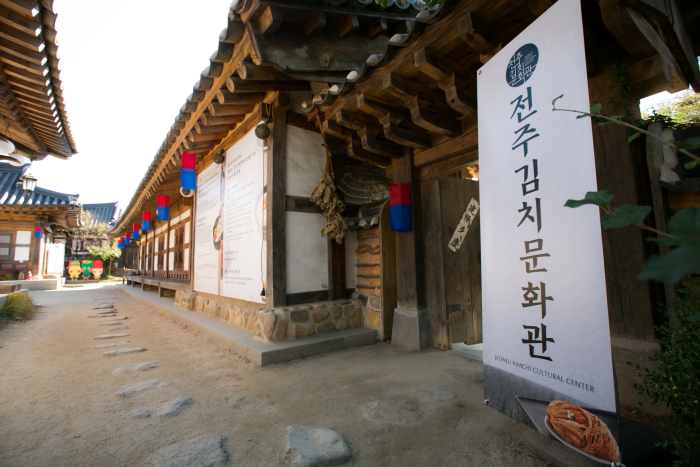
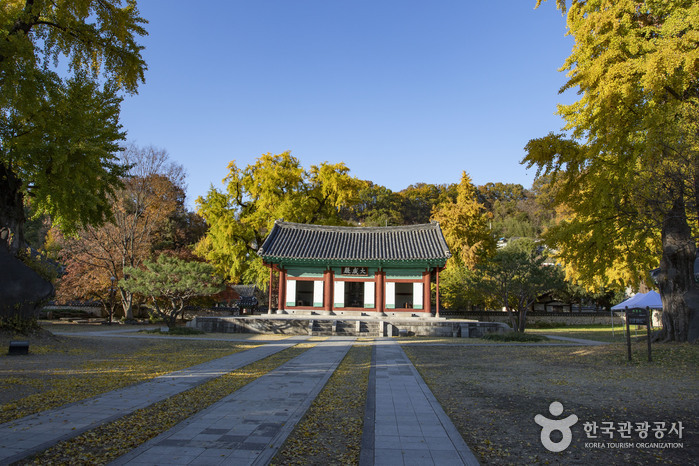
![Yeohangga [Korea Quality] / 여행가 [한국관광 품질인증]](http://tong.visitkorea.or.kr/cms/resource/63/2572563_image2_1.jpg)

![Hanokstory [Korea Quality] / 한옥이야기 [한국관광 품질인증]](http://tong.visitkorea.or.kr/cms/resource/20/2046320_image2_1.jpg)
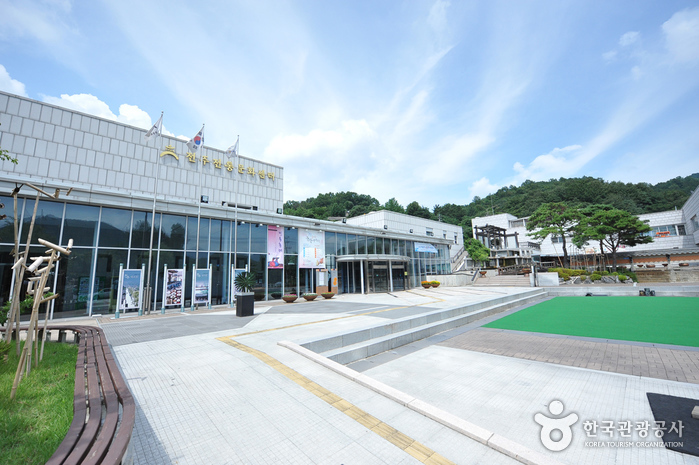
![Inyeon Hanok [Korea Quality] / 인연 [한국관광 품질인증]](http://tong.visitkorea.or.kr/cms/resource/21/2583721_image2_1.jpg)
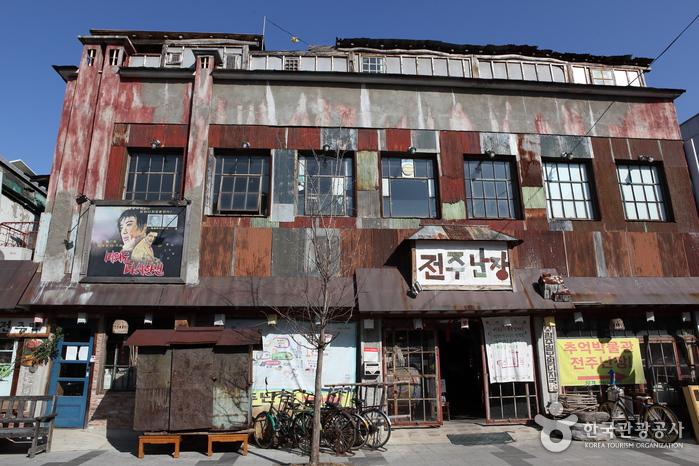
![ONEWWAL[Korea Quality] / 오뉴월[한국관광 품질인증/Korea Quality]](http://tong.visitkorea.or.kr/cms/resource/97/2651897_image2_1.jpg)
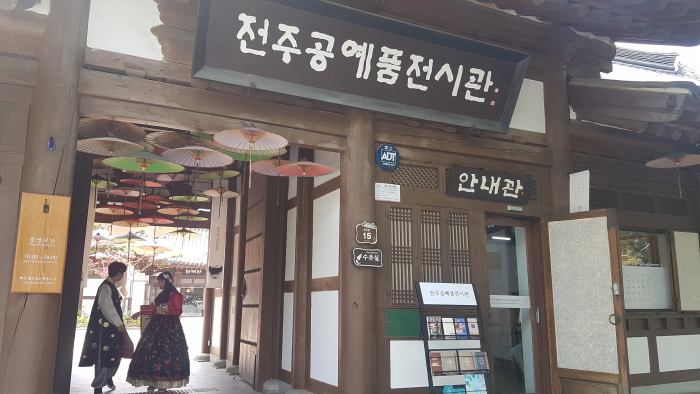
 Français
Français
 한국어
한국어 English
English 日本語
日本語 中文(简体)
中文(简体) Deutsch
Deutsch Español
Español Русский
Русский